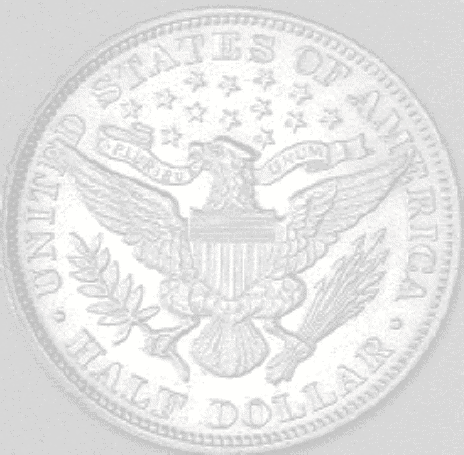
|
|
||
|
|
|
|
|
|
||

-26-
FOR BETTER OR WORSE:
The Gold Standard
The Act of June 28, 1834
placed the United States on the gold standard (Yeoman, 9), but reduced
the weight of standard gold coinage. By the Act of January 18, 1837,
coinage laws were completely revised. The new legislation covered legal
standards, mint charges, legal tender, mint procedure, tolerance in coin
weights, accounting methods, a bullion fund, and standardization of both
gold and silver coins to a fineness of 900 (Yeoman, 9). It declared the
"money unit or metallic representative of the dollar of account" should
be the gold dollar that contained a weight of 25.8 grains of standard
gold (White, 214).
According to the Constitution of the United
States, Congress has been given the authority to regulate the value of
our coinage, however, it should be abundantly clear there can be no
stability in society so long as Congress can alter at will the standards
of weights and measures.
"The Crime Of '73"
In 1840, the Coinage of silver
"dollars" resumed; however, by the Act of February 12, 1873, they were
again discontinued. Often referred to as "the Crime of '73," the bill
was a general revision of the coinage laws. The daily proceedings which
were reported by the Congressional Globe occupied 144 columns
(White, 213).
The Act of 1873 "demonetized" silver and again placed the country on the
gold standard (Yeoman, 11). It therefore discarded the bimetallism that
Congress authorized by the Coinage Act of 1792 and which has never been
repealed. The new law had proposed a silver "dollar" weighing only 384
grains, the weight of 2 half "dollars" (White, 222); however, the
proposal was dropped, and in its place the "Trade Dollar" was authorized
for trade with China (White, 223). Its weight was set at 420 grains
compared to the standard weight of 412.5 grains. * The increased weight
made the Trade "dollar" more desirable than the Mexican "dollar" that
had become the leading medium of exchange in the Orient. The free
coinage of the Trade "dollar" was discontinued in 1878 (“Coins and
Currency”, 2).
*If in 1792 Congress fixed the weight of a silver "dollar" at 416 grains, can a "dollar" weigh more or less?
The Panic of 1873
Tampering with the
weights and measures of the land caused people to lose further
confidence in the government and shook the country in what became known
as the Panic of 1873. In order to stop the approaching panic, Secretary
of the Treasury William Richardson reissued 26,000,000 "dollars" in
"Greenbacks" without authorization (White, 195). The result of adding to
the supply of paper "money" already in circulation was like adding coals
to the fire, and in order to avoid disaster, banks issued "loan
certificates" (White, 247).
